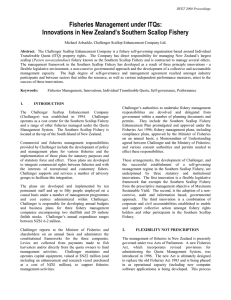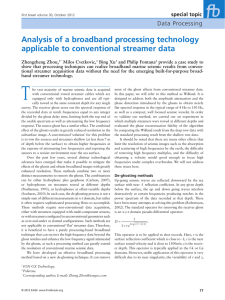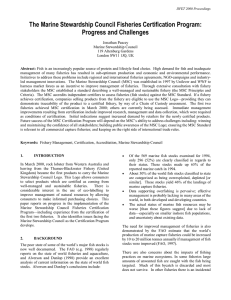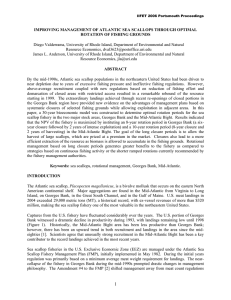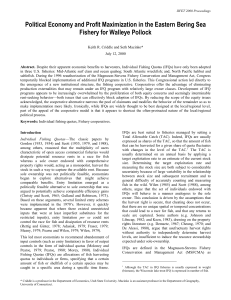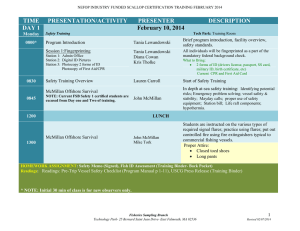An Extension of the Classical Estimates of Dredge Efficiency and
advertisement
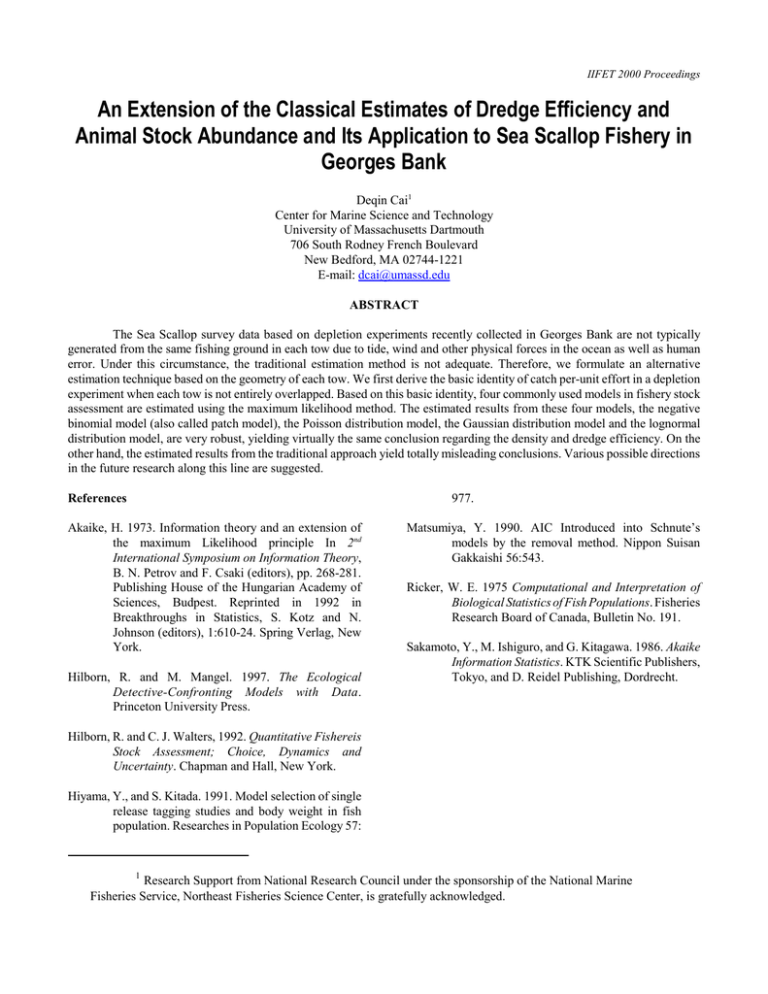
IIFET 2000 Proceedings An Extension of the Classical Estimates of Dredge Efficiency and Animal Stock Abundance and Its Application to Sea Scallop Fishery in Georges Bank Deqin Cai1 Center for Marine Science and Technology University of Massachusetts Dartmouth 706 South Rodney French Boulevard New Bedford, MA 02744-1221 E-mail: dcai@umassd.edu ABSTRACT The Sea Scallop survey data based on depletion experiments recently collected in Georges Bank are not typically generated from the same fishing ground in each tow due to tide, wind and other physical forces in the ocean as well as human error. Under this circumstance, the traditional estimation method is not adequate. Therefore, we formulate an alternative estimation technique based on the geometry of each tow. We first derive the basic identity of catch per-unit effort in a depletion experiment when each tow is not entirely overlapped. Based on this basic identity, four commonly used models in fishery stock assessment are estimated using the maximum likelihood method. The estimated results from these four models, the negative binomial model (also called patch model), the Poisson distribution model, the Gaussian distribution model and the lognormal distribution model, are very robust, yielding virtually the same conclusion regarding the density and dredge efficiency. On the other hand, the estimated results from the traditional approach yield totally misleading conclusions. Various possible directions in the future research along this line are suggested. 977. References Akaike, H. 1973. Information theory and an extension of the maximum Likelihood principle In 2nd International Symposium on Information Theory, B. N. Petrov and F. Csaki (editors), pp. 268-281. Publishing House of the Hungarian Academy of Sciences, Budpest. Reprinted in 1992 in Breakthroughs in Statistics, S. Kotz and N. Johnson (editors), 1:610-24. Spring Verlag, New York. Hilborn, R. and M. Mangel. 1997. The Ecological Detective-Confronting Models with Data. Princeton University Press. Matsumiya, Y. 1990. AIC Introduced into Schnute’s models by the removal method. Nippon Suisan Gakkaishi 56:543. Ricker, W. E. 1975 Computational and Interpretation of Biological Statistics of Fish Populations. Fisheries Research Board of Canada, Bulletin No. 191. Sakamoto, Y., M. Ishiguro, and G. Kitagawa. 1986. Akaike Information Statistics. KTK Scientific Publishers, Tokyo, and D. Reidel Publishing, Dordrecht. Hilborn, R. and C. J. Walters, 1992. Quantitative Fishereis Stock Assessment; Choice, Dynamics and Uncertainty. Chapman and Hall, New York. Hiyama, Y., and S. Kitada. 1991. Model selection of single release tagging studies and body weight in fish population. Researches in Population Ecology 57: 1 Research Support from National Research Council under the sponsorship of the National Marine Fisheries Service, Northeast Fisheries Science Center, is gratefully acknowledged.





